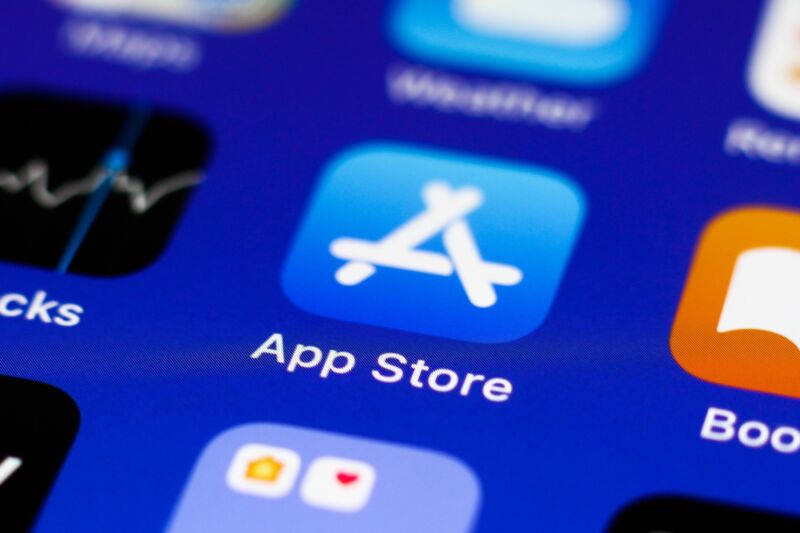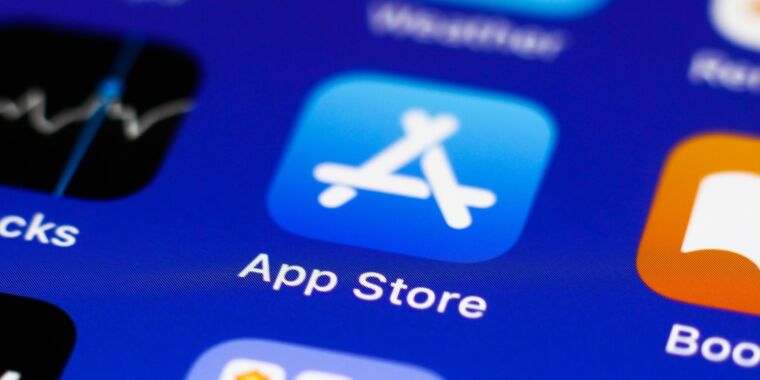
Getty Images | NurPhoto
In September, US District Judge Yvonne Gonzalez Rogers ruled that Apple must allow iOS developers to direct users to external content-purchasing mechanisms outside of the App Store’s built-in In-App Purchases. Tuesday night, Rogers refused Apple’s request to stay that ruling, setting the stage for it to go into effect Dec. 9 pending further appeal.
In a blunt four-page ruling, Judge Rogers said Apple’s motion for a stay, filed last month, is “fundamentally flawed” and “based on a selective reading of this Court’s findings and ignores all of the findings which supported the injunction, namely incipient antitrust conduct including supercompetitive commission rates resulting in extraordinarily high operating margins and which have not been correlated to the value of its intellectual property.”
Apple’s anti-steering provisions, which prevent app makers from telling users about alternate payment methods inside of the apps themselves, “are one of the key provisions upon which Apple has been able to successfully charge supracompetitive commissions untethered to its intellectual property,” Judge Rogers writes. Those provisions depress royalty rates for Epic’s Unreal Engine specifically and “in the industry generally” she continues.
Judge Rogers also dismissed as “exaggerated” Apple’s argument that allowing links and “metabuttons” for alternate payments would result in “irreparable harm… in the form of loss of trust and integrity in the iOS ecosystem.” Rogers cites other exceptions like the reader rule and cross-play show that “alternatives outside the app can be accommodated.”
“The Court can envision numerous avenues for Apple to comply with the injunction and yet take steps to protect users, to the extent that Apple genuinely believes that external links would create issues,” the ruling continues. “Consumers are quite used to linking from an app to a web browser. Other than, perhaps, needing time to establish Guidelines, Apple has provided no credible reason for the Court to believe that the injunction would cause the professed devastation.”
Rogers also rejected arguments that the ruling would require technical and guideline changes that were “exceedingly complicated” and that it would “take [Apple] months to figure out the engineering, economic, business, and other issues,” as Apple attorney Mark Perry put it in oral arguments. Rather than request that additional compliance time in its motion, though, Judge Rogers notes that Apple “wants an open-ended stay with no requirement that it make any effort to comply. Time is not irreparable injury.”
Under Rogers’ original ruling, purchases made directly inside of the iOS apps themselves must still use Apple’s In-App Payment system, as noted in the Apple Developer Agreement. That grants Apple a distinct advantage, Rogers writes: “Apple still maintains the convenience of IAP and, if it can compete on pricing, developers may opt to capitalize on that convenience, including any reassure that Apple provides to consumers that it may provide a safer or better choice. The fact remains: it should be their choice. Consumer information, transparency, and consumer choice is in the interest of the public.”
Apple will likely take advantage of its opportunity to appeal the ruling to the Ninth Circuit Court of Appeals before it goes into effect on Dec. 9. Ahead of that effective date, Apple has already loosened its “external payment link” rules for many non-game apps. The company also agreed to allow developers to email customers about externa payment methods as part of the settlement of a separate class action lawsuit.
Rogers’ September ruling separately affirmed Apple’s decision to remove Fortnite from the iOS App Store and block Epic Games’ iOS developer accounts indefinitely. That portion of the ruling will remain in effect even as Epic goes through its own legal appeals process.
